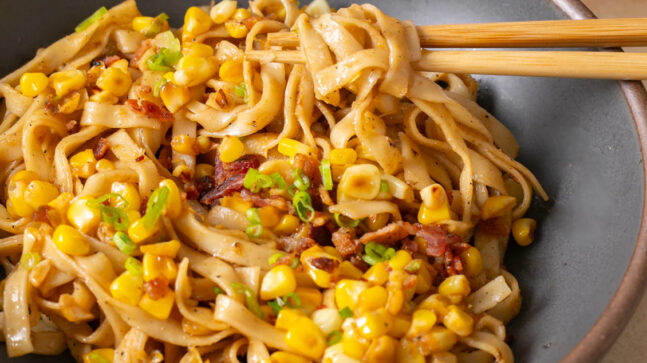 The foundation of any good burger is the meat. We’re going to get fancy with buns and toppings later this week, but the meat itself is always the most important part. If you screw up the meat you’re going to end up with a less than fantastic burger (you’re still going to eat it, obviously) regardless of how many slices of artisan cheese, heirloom tomato and jowl bacon you put on it. If you’re making burgers from scratch, here are a few things you need to know:
The foundation of any good burger is the meat. We’re going to get fancy with buns and toppings later this week, but the meat itself is always the most important part. If you screw up the meat you’re going to end up with a less than fantastic burger (you’re still going to eat it, obviously) regardless of how many slices of artisan cheese, heirloom tomato and jowl bacon you put on it. If you’re making burgers from scratch, here are a few things you need to know:
The Grind:

Ideally, you should be grinding your own meat at home. If you have a standing mixer, there are meat grinder attachments in the realm of $40. If you’re the guy with the badass grill, yard and craft beer selection, it’s probably worth throwing down roughly $25 for a manual meat grinder. You can get them from any kitchen supply store, but it’s probably easier to just buy it from Amazon. If you’re getting your meat from a butcher, they’ll generally grind it for you, too. Even if you buy it pre-ground from the store, all these options lead to the same question: what’s the ideal grind thickness?
The answer, like most things when it comes to cooking, is “it depends.” We’ve all been conditioned to believe that coarsely ground meat is the only thing you want in a burger, but that’s not necessarily true. It’s true that a good, coarse grind will give you delicious meaty chunks and juice pockets, but a finer grind, or sending the meat through the grinder twice, is also delicious.
Chill Out:
Until you actually start applying heat to your meat (insert chuckle here), everything should be cold, and we’re not talking about brisk light jacket cold, either. Think closer to freezing. It’s all well and good that closer to sub zero will prevent E-Coli, which is a legitimate concern, but you should be more concerned about the fat in the meat. Fat melts. You want to keep the fat in your burger until it explodes in your mouth because it’s the most delicious part. Seriously, put your burgers (and your grinding parts if you’re gonna DIY) in the fridge or the freezer until you’re ready to start cooking.
Meat Party:

Chuck. Sirloin. Brisket. Hanger Steak. Short Rib. Ox-Tail. 80/20. 85/15. Feels a little like Science class, right? What about lamb, sausage, or bacon? You have a lot of choices when it comes to the actual cuts of beef and any additional meats you want to mix in. It can get downright confusing, but you don’t need a degree in Beef Science to figure out how to make a basic burger.
Beef has a number of different cuts with different flavor profiles, textures, purposes and fat content. Chuck is always the first guy to the party. He’s lean, but he’s got just enough fat on him that he’s well-balanced in the flavor department. Most importantly, he plays well with others. His slightly-more-well-off big brother Sirloin is normally billed as a higher-quality choice because he’s ridiculously lean, but he’s nowhere near as juicy. Oxtail comes from exactly where you think it does, and it’s ridiculously fatty. On it’s own, oxtail is decadent to the point of crossing the line into over the top. Combine all three of these cuts together and you end up with a balance of fat content, texture and, if this were Food Network, umami. Everyone’s palate is different, so go ahead and experiment with different cuts and mixes to find the one you like best. tl;dr? Stick with Chuck. He’ll take care of you.
 As for the numbers, those are lean/fat ratios. Fat is juicy, beefy, delicious, moist and holds your burger party together, but it’s also, well, fat. You’re not going to get your exercise for the day eating pure grilled fat, and that’s not even possible because it would all just melt. Contrary to popular belief, 85/15 is not ideal. It’s not the end of the world, but you want your beef closer to 70/30 for ideal deliciousness. Honestly, don’t even mess with anything less than 15% fat. The end result is going to be dry, tasteless and not worth the hours on the treadmill later.
As for the numbers, those are lean/fat ratios. Fat is juicy, beefy, delicious, moist and holds your burger party together, but it’s also, well, fat. You’re not going to get your exercise for the day eating pure grilled fat, and that’s not even possible because it would all just melt. Contrary to popular belief, 85/15 is not ideal. It’s not the end of the world, but you want your beef closer to 70/30 for ideal deliciousness. Honestly, don’t even mess with anything less than 15% fat. The end result is going to be dry, tasteless and not worth the hours on the treadmill later.
The Patty:

Start with a big bowl of cold beef (you kept it cold, right?) and clean! hands. [We’re purists when it comes to burgers, so salt and fresh ground pepper are enough. If you want to experiment with dry spices, vegetables, or other binders like eggs or breadcrumbs, now is the time.] Now you get to play with the meat.
If you want to get super precise, you should be measuring your meat. If you want to duplicate your success time and time again, or get a perfect baseline for cooking time, the kitchen scale is the only way to go. If you want patties on the thinner side, 4oz is a good place to start. Thicker? 6-8oz.
We don’t all have a kitchen scale though, so the most important thing here is size consistency. If all your patties are the same size, they’ll cook at the same speed. This is important because you want your perfect done-ness, but also because you have more important things to do like drink beer. Depending on how you’re cooking them and your preference, you want about 3/4″ – 1″ thick, but don’t pack them too tightly. There is also a correlation between shrinkage and fat percentage, so make the patties a little bigger than your buns.
 Just remember, this is like a massage. If you don’t use enough force, they’ll be too loose and fall apart. If you use too much force, your meat will be too dense and tough. You’re looking for the ideal middle ground. Put a dimple in the middle of each of your patties with a few fingers. When you’re done, cover all the patties and put them back in the fridge for around an hour prior to cooking. When you’re ready to cook, take them out and season both sides liberally with salt and fresh ground pepper.
Just remember, this is like a massage. If you don’t use enough force, they’ll be too loose and fall apart. If you use too much force, your meat will be too dense and tough. You’re looking for the ideal middle ground. Put a dimple in the middle of each of your patties with a few fingers. When you’re done, cover all the patties and put them back in the fridge for around an hour prior to cooking. When you’re ready to cook, take them out and season both sides liberally with salt and fresh ground pepper.
What’s Next:
Eating. Just kidding, that comes later. First, you need to figure out toppings, buns and cooking. We’re going to get through all of those things, and more, during Burger Week.





